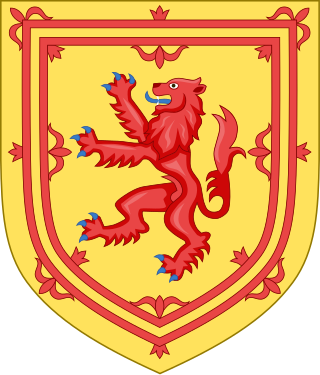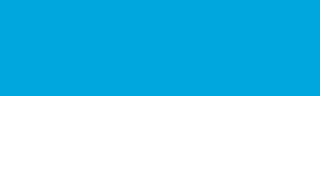
The coat of arms of the Republic of Croatia consists of one main shield and five smaller shields which form a crown over the main shield. The main coat of arms is a checkerboard (chequy) that consists of 13 red and 12 white fields. It is also informally known in Croatian as šahovnica. The five smaller shields represent five different historical regions within Croatia.

The coat of arms of Belgium bears a lion or, known as Leo Belgicus, as its charge. This is in accordance with article 193 of the Belgian Constitution: The Belgian nation takes red, yellow and black as colours, and as state coat of arms the Belgian lion with the motto UNITY MAKES STRENGTH. A royal decree of 17 March 1837 determines the achievement to be used in the greater and the lesser version, respectively.

The coat of arms of Finland is a crowned lion on a red field, the right foreleg replaced with an armoured human arm brandishing a sword, trampling on a sabre with the hindpaws. The Finnish coat of arms was originally created around the year 1580.

The coat of arms of Scotland, colloquially called the Lion Rampant, is the coat of arms historically used as arms of dominion by the monarchs of the Kingdom of Scotland, and later used within the coat of arms of Great Britain and the present coat of arms of the United Kingdom. The arms consist of a red lion surrounded by a red double border decorated with fleurs-de-lis, all on a gold background. The blazon, or heraldic description, is: Or a lion rampant Gules armed and langued Azure within a double tressure flory-counter-flory of the second.

The coat of arms of Denmark has a lesser and a greater version.

The coat of arms of Togo was adopted on 14 March 1962. Since this Togolese national symbol does not follows the rules of heraldry for a traditional coat of arms, then it could be considered a national emblem instead.

The coat of arms of Schleswig or Southern Jutland depicts two blue lions in a golden shield. It is the heraldic symbol of the former Duchy of Schleswig, originally a Danish province but later disputed between Danes and Germans. The region has been divided between Germany and Denmark since 1920 and the symbol consequently appears in official heraldry in both countries. It is derived from the national coat of arms of Denmark and has been dated to the middle of the 13th century, first known from the arms of Erik Abelsøn, Duke of Schleswig. Throughout the ages, the design has featured both crowned and uncrowned lions, the lions have occasionally been accompanied by heraldic hearts, and usage between heraldic lions and leopards has shifted. The far most common version was to omit both crowns and hearts and this version has been used exclusively for several centuries.

The German state of Brandenburg has a coat of arms depicting a red eagle.
This is a list of coats of arms of Germany.

The coat of arms of Berlin is used by the German city state as well as the city itself. Introduced in 1954 for West Berlin, it shows a black bear on a white shield. On top of the shield is a special crown, created by the amalgamation of the mural crown of a city with the so-called people's crown, used in Germany to denote a republic. Berlin's various boroughs use their own emblems.
The Day of the German-speaking Community is a holiday in Belgium celebrated on 15 November each year. It is a public holiday for the German-speaking Community of Belgium but it is not celebrated elsewhere in the country. The equivalents of the other communities are the Day of the Flemish Community and the Day of the French-speaking Community. The ceremony coincides with the King's Feast.
The coat of arms of the Flemish Community is a heraldic symbol used by Flanders, Belgium. Although the lion has been in use for almost nine hundred years as the arms of the Count of Flanders, it only became the official symbol of the Flemish Community in 1973. At present its form and use is subject to the Decree of 7 November 1990.

German heraldry is the tradition and style of heraldic achievements in Germany and the Holy Roman Empire, including national and civic arms, noble and burgher arms, ecclesiastical heraldry, heraldic displays and heraldic descriptions. German heraldic style is one of the four major broad traditions within European heraldry and stands in contrast to Gallo-British, Latin and Eastern heraldry, and strongly influenced the styles and customs of heraldry in the Nordic countries, which developed comparatively late. Together, German and Nordic heraldry are often referred to as German-Nordic heraldry.

The civil flag that serves as the symbol of the state of Mecklenburg-Vorpommern, Germany, consists of five horizontal stripes, that are from the top to bottom: blue (ultramarine), white, yellow, white, and red (vermilion). It was designed by Norbert Buske and adopted on 29 January 1991. It is a combination of the historical flags of the Mecklenburg and Western Pomerania.

The coat of arms of the city of Gdańsk, in its current form, dates back to 1410 and Banderia Prutenorum. The coat of arms is very similar to the flag of Gdańsk. It depicts two silver crosses on a red shield above each other, above which hovers a golden crown. The greater arms also has two lions as supporters and Gdańsk motto.

National symbols of Belgium are the symbols used to represent the Kingdom of Belgium. Article 193 of the Belgian Constitution is dedicated to specifying the national flag, colours, coat of arms, and motto. It says the following: "The Belgian nation takes red, yellow and black as colours, and as state coat of arms the Belgian lion with the motto Unity makes strength."

The Coat of arms of Styria is the historic coat of arms of the region of Styria, a federal state of Austria. It shows a white heraldic panther with red horns and claws breathing red fire on a green field. The shield is crowned with the ducal hat of Styria. The coat of arms is also used in several municipal arms of the state, including Graz and Steyr.

The flag that serves as the symbol of the historical and geographical region of the Western Pomerania is divided horizontally into two stripes: light blue on the top and white on the bottom. It originated as the flag of the Province of Pomerania, Prussia, used from 1882 to 1935. Since 1996, it is officially recognized as the symbol of the historical region of Western Pomerania within Mecklenburg–Western Pomerania, Germany.

The flag that serves as the symbol of the German-speaking Community of Belgium, a federal community in Belgium, was adopted in 1990.

The flag that serves as the symbol of the historical and geographical region of the Mecklenburg is divided horizontally into two stripes: light blue on the top and white on the bottom. It originated as the flag of the Grand Duchy of Mecklenburg-Schwerin, adopted in 1813. Since 1996, it is officially recognized as the symbol of the historical region of Mecklenburg within Mecklenburg-Vorpommern, Germany.

















